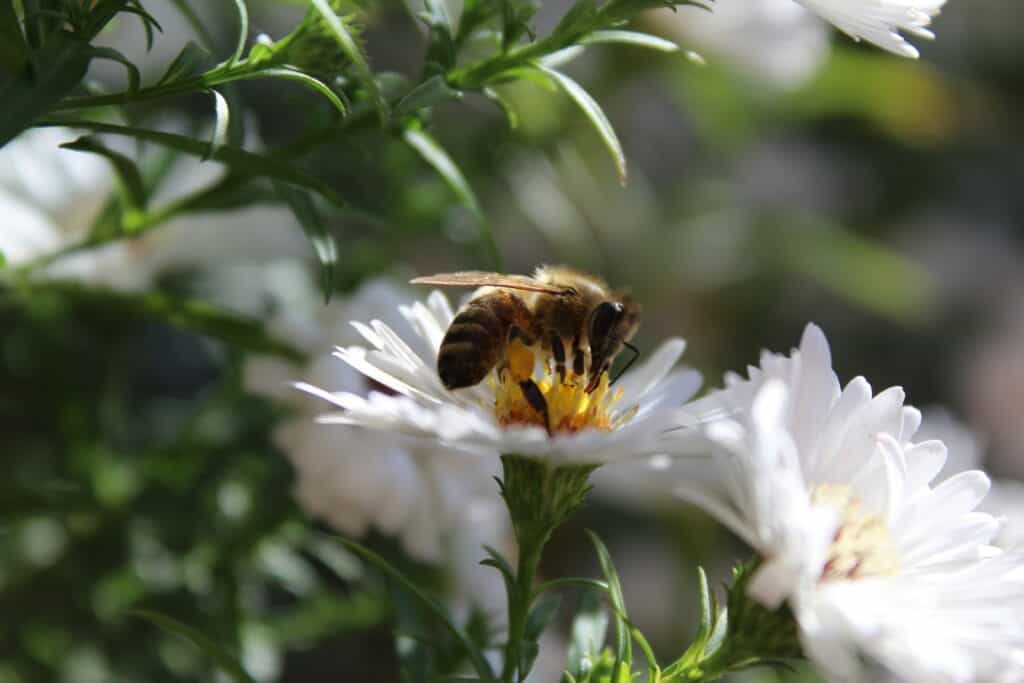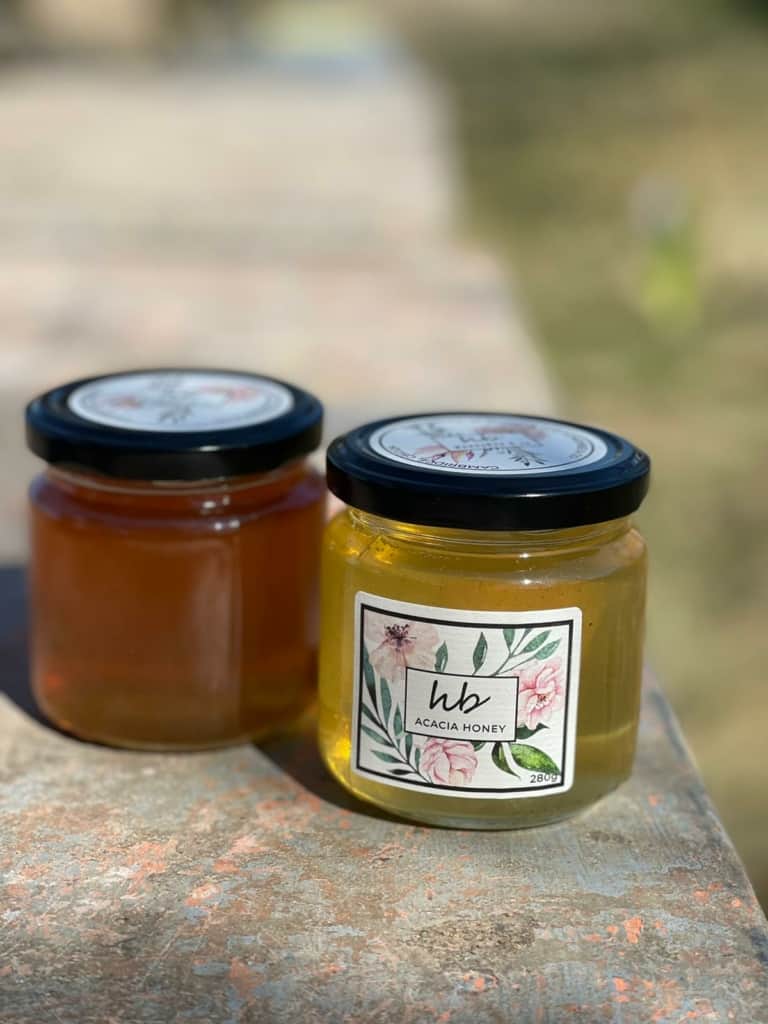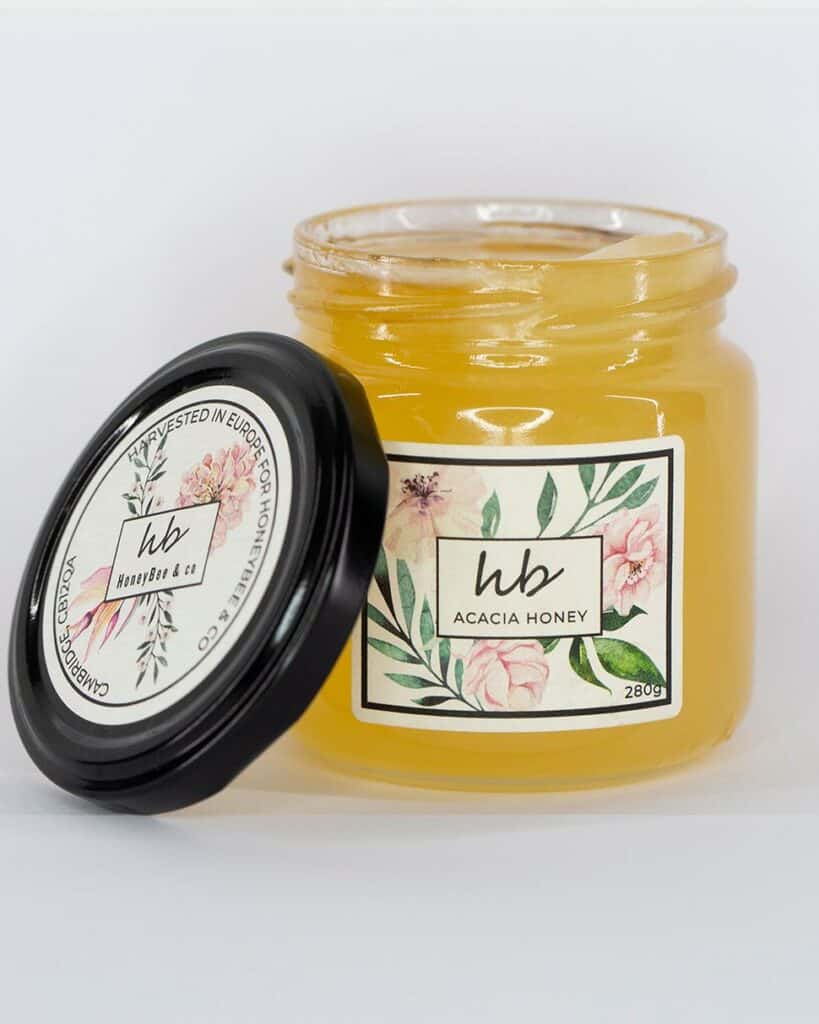Deliciously sweet, often a deep golden colour and rich in natural goodness, honey is a popular and healthy alternative to sugar. Honey has a long and fascinating history and is routinely used in cooking and baking, to sweeten hot drinks and even in the medical and beauty industries.
You may be shocked to find that honey has actually been used as a weapon in warfare or to find out just how long bees have been around. Read on to discover some truly surprising and fascinating facts about honey and the incredible little creatures that make it possible!
Honey can be categorised into two main types:
Floral honey/ blossom honey – made by bees visiting flowering plants to gather nectar.

Honeydew honey is made by bees collecting honeydew, a sugary liquid from sap. Honeydew honey (sometimes called forest honey) is dark and less sweet than blossom honey.
Honey facts & curiosities
- Honey is the only concentrated sweetener that is found in nature.
- Honey is a complex solution, containing over 180 different substances.
- Floral honey is affected by its environment, meaning that honey from different areas will have a slightly different make up and also different properties.
- Honey varies in colour from a very light yellow to a warm golden, a dark or reddish amber and occasionally, can appear to be almost black.
- The ph of honey is between 3.2 and 4.5, due to the presence of organic acids. The low ph means that bacteria find it hard to grow in honey, which gives it its long shelf life!
- Amazingly, honey is the only food that is produced by an insect and then eaten by both insects and humans. Honeypot ants are also honey producers but it is not a product regularly consumed by humans.
- To make one pound of honey, a foraging honey bee has to travel approximately 55,000 miles and visits around 2 million flowers.
- Mono- floral honey is made by bees visiting one plant, the most famous probably being Manuka honey, which is produced in New Zealand, by bees who visit the manuka tree (Leptospermum Scoparium). Multi-floral honey is made by bees foraging on wildflowers.
Honey also has a special place in history and was used in an early version of ‘chemical warfare’:
- Persian troops left out local honey, rich in natural toxins, for the invading Roman army to find. Consuming too much was said to cause disorientation, dizziness and nausea. After eating the toxic honey, the Romans were unable Defend themselves against the Persians. This toxic honey originates from the Black Sea region in Turkey and was also used against Greek invaders.
- Honey bees were also around long before they were used to help warn off the invading Roman armies – fossil evidence suggests that bees were on earth 150 million years ago! That means that these incredible honey producers were around long before early-man.
Honey is also used in the fields of medicine:
- Some clinical evidence suggests that honey is extremely useful in the treatment of burns and wounds as well as eczema.
- For many centuries honey has been used by people in different parts of the globe to cure infection. Honey is still considered a powerful antibacterial agent, first discovered as such in 1892 (although it was routinely used for many years before this, without a full understanding of its properties)
- Honey is a powerful antibiotic and antiseptic and academics and scientists continue to study honey and its medicinal properties today, in order to understand them further.
The beauty industry has also harnessed the power of honey:
- Using raw honey on the face is thought to help with healing scars and alleviate the symptoms of skin conditions such as acne or psoriasis.
- Honey’s powerful antibacterial properties can help to treat minor bacterial and fungal infections in the skin.
- Mixed in with other natural ingredients, honey is a deeply nourishing addition to face masks or creams.
After considering all of these honey curiosities, we are sure you will agree that honey is a fascinating and diverse product with a rich history and a range of different uses in the modern world.
Honey is quite possibly the best sweet tasting thing on the planet. It’s sweet, but not too sweet. Just sweet enough. So if you love the taste of honey, here are a couple of reasons why you should use honey on a regular basis. First of all, honey is good for your health. It has antioxidants that can help you fight off flu and cold viruses. It can also help treat allergies and pollen sensitivity and people have used honey to make scars less noticeable. It’s cheap, so you can use it all the time!
Honey is a natural sweetener that can be used in a number of recipes to replace sugar. It’s been used for centuries and is one of the few things that is considered both a medicine and a food. The health benefits of honey are so great that some people have even claimed that they do not feel the need to consume sugar anymore! If you’d like to learn more, here are the reasons why we should use honey daily!
Did you know that honey was used as an embalming fluid in ancient Egypt? What’s more, honey was also used to create amazing artwork! In ancient times, honey was often sculpted into realistic, lifelike figures and animals in honour of the Egyptian gods. It is a versatile substance, used to heal the sick, preserve the dead, and even fuel the engines of the modern world. A new study has found that bees will actually refuse to pollinate certain types of flowers if they sense that they have already been pollinated.
Did you know that honey is a natural antiseptic? It works amazingly well to heal cuts and wounds on the skin. It is antibacterial, which means that it does not allow bacteria to breed, so it is great for your skin. It can also produce a healing response when applied to the skin. It can also effectively remove poison ivy rashes. And it doesn’t just have to be used on humans! You can apply it to wounds on your pets as well.
Did you know that the honeybees used to pollinate flowers to make honey are native to Africa? There are many types of honey, but the most common types of honey are clover, acacia, and sage. Did you know that honey isn’t actually acid? It’s just that bacteria that are present in honey can produce an acid.
Now that you know this, go on and try it out!


